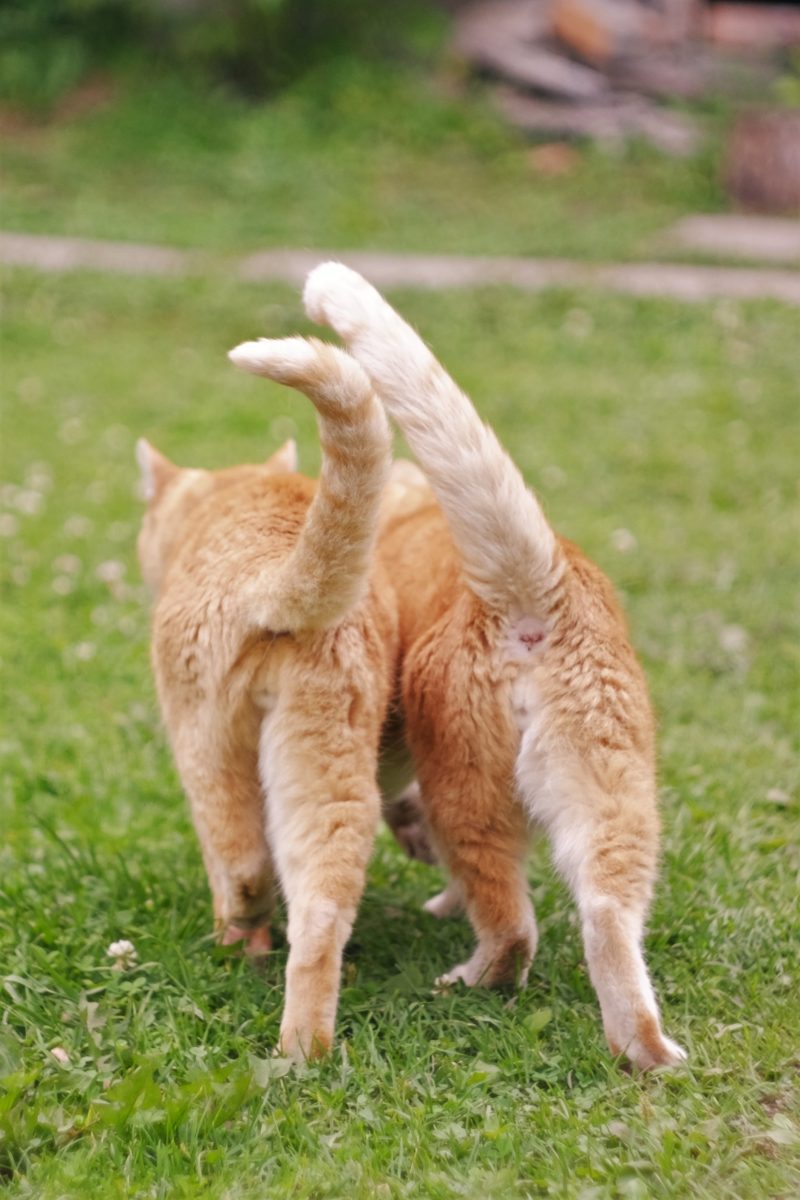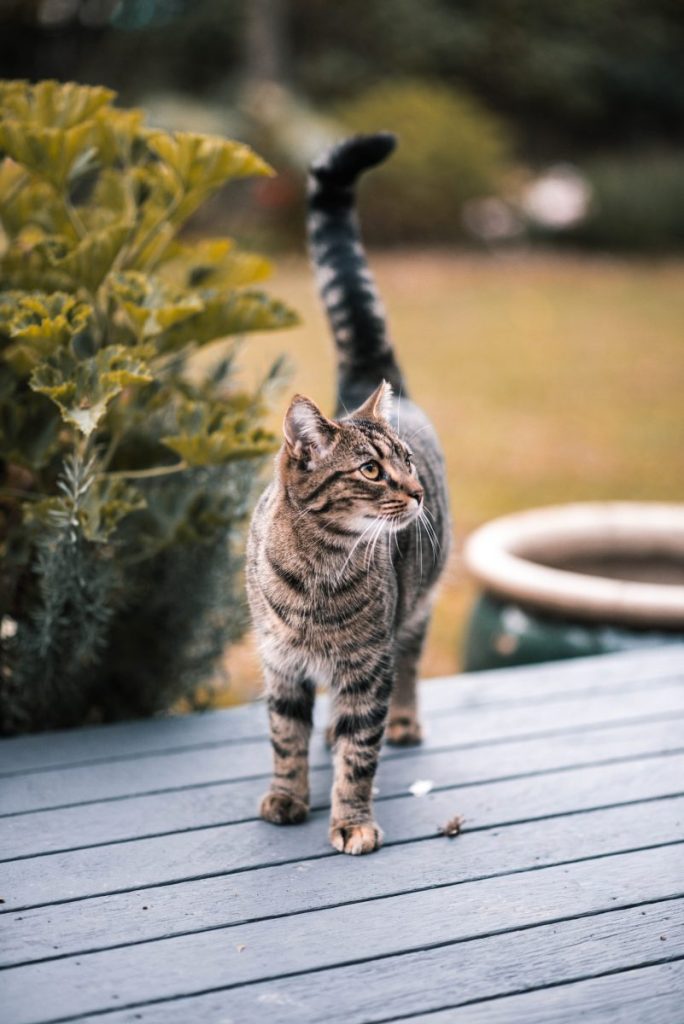
What Is My Cat’s Tail Telling Me?
6 Jul 2020.
Cats can be very mysterious animals. It’s difficult to tell what your cat is thinking; are they walking up to you because they want to play, or are they demanding more food? Is your cat’s tail wag a friendly gesture of companionship, or is your kitty feeling angry? Below Cat in a Flat discovers the hidden tales our cats are trying to tell us with their tails.
Cat’s tails serve many functions for our moggies. One of the most crucial tail functions is to help our kitties balance. Tails help cats walk across narrow surfaces, jump around, or chase after their favourite toy. Cats can function well without their tails, however. The Manx breed is born without a tail and is just as agile and well balanced as other breeds. Similarly, bobtails have very short tails and move around just as gracefully as their long-tailed cousins. Kitties who suffer tail injuries will also learn to compensate when moving around.

Domestic cats are the only felines to hold their tails upright when moving around. Wild felines primarily hold their tails horizontally or between their legs. Cats will often hold their tails erect among other kitties to invite them to share scents and get to know each other. Mother cats will also use their tail to indicate for her kittens to follow, a little bit like a tour guide holding up an umbrella.
Crucially, our cats’ tails are also a way we can learn what our furry friends are trying to say. Body language is crucial to the way cats communicate, and the tail is an essential part of cat-talk. When combined with our knowledge of cats’ purrs, meows and other vocalisations, knowledge of the tail and what it can say is a powerful tool in getting to know Mr Whiskers.
All cats are different so our guide will give you a helping hand, but you should take the time to get to know your kitty friend and what their tail is telling you.

Below is a run down of different cat’s tail positions and what they mean
- Upright and vibrating: I like you very much, and I’m so happy to see you! Cats often accompany an upright tail with a trill sound, the kitty version of “hello!”
- Straight up and not moving, or the tail has a question mark shape at the top: I am happy and comfortable, let’s be friends, I think you can stroke me.
- Wrapped around you or another cat: This is a sign of intimacy, comfort and friendship: “I like you!”
- Your cat holds it at an angle behind: Hmm, I’m feeling interested. Please kneel down and stretch your hand towards me so I can give it a sniff.
- Between the cat’s hind legs: I’m feeling worried; you should approach me slowly, if at all.
- Tip of the tail is twitching from side to side: I am alert, focused and feeling playful. Best not to disturb me unless you want to play.
- Swaying side to side: You shouldn’t disturb me, I am focused and could attack something soon.
- Slapping back and forth: I am upset, best to leave me alone until my mood passes.
- Upright and bushy: I am mad, stay away from me.
- Horizontal and bushy: I am scared and don’t quite know what to do next, so please stay still, give me some space and wait until I’ve calmed down.

A cat’s tail can tell us a lot about a kitty’s health as well as their mood.
Cats can indicate underlying illnesses in their body language. If kitty starts changing the way they communicate with their tail – only holding it low and behind them, for example – then monitor their behaviour closely and take them to the vets if you’re worried.
Tails are also very sensitive so it can be excruciating for a cat if they suffer an injury. The tail is an extension of your cat’s spine so injuries can be serious. The base of a cat’s tail is an area prone to fleas so look out for excessive grooming or bald spots.
Tip for cat sitters: As a cat sitter you will meet a lot of different kitties with different behaviours and characteristics. Understanding your kitty client’s tail movements, facial expressions and different meows is important to pave the way for great friendships. Find out more about caring for an aggressive cat in this article on the Cat in a Flat blog.
When fluffy can’t stop watching his tail or chases it around in circles, you might think it has a mind of its own! 😸
- #cat behaviour
- #cat body language
- #catinaflat
- Cat Care
- cat sitter service
- cat tail

